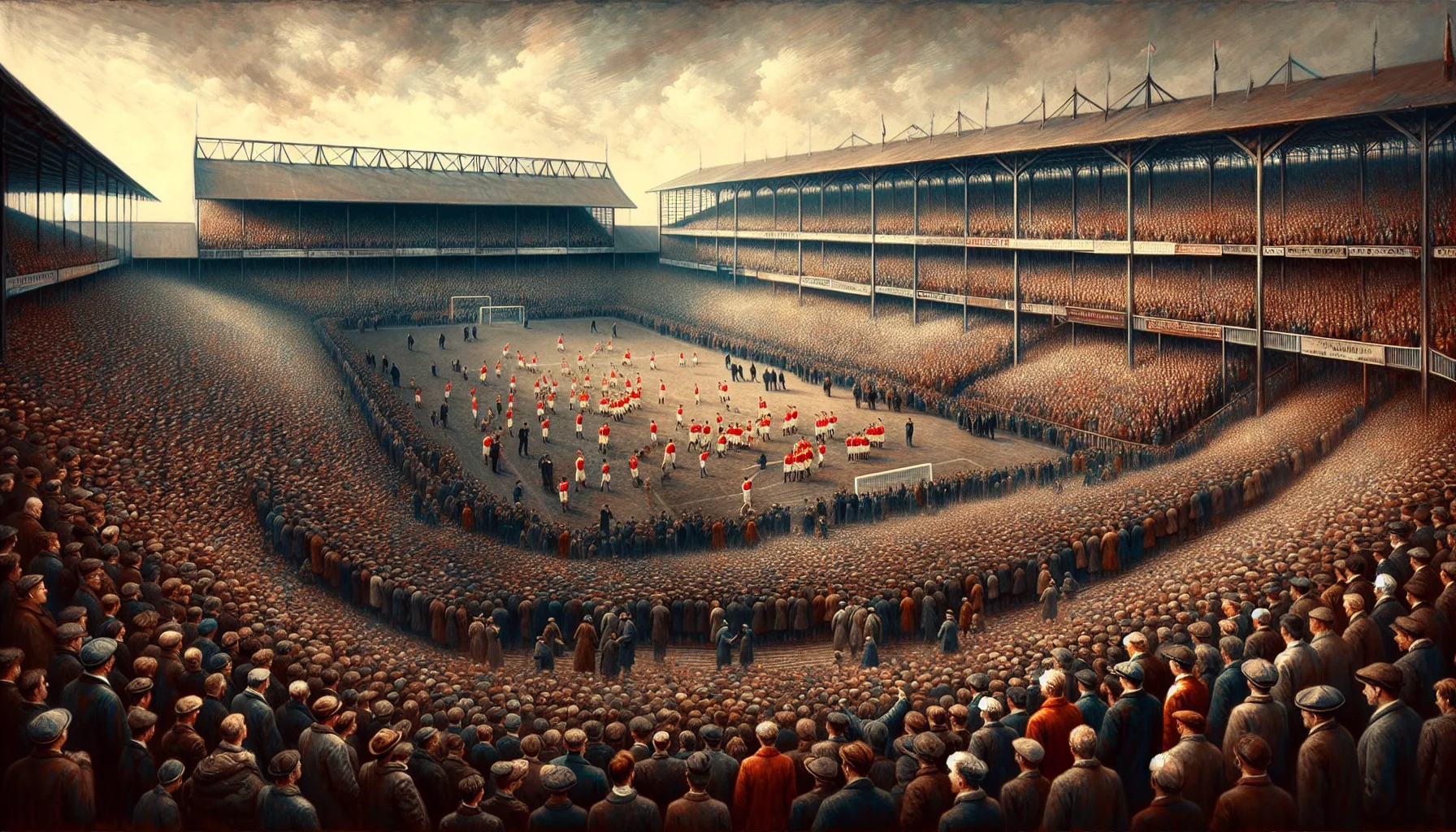
Hillsborough Disaster
by: The Calamity Calendar Team
April 15, 1989
A Day Meant for Celebration Turns Tragic
April 15, 1989, was supposed to be a day filled with the thrilling anticipation of a football match at Hillsborough Stadium in Sheffield, South Yorkshire, England. Two formidable teams, Liverpool and Nottingham Forest, were to clash in the FA Cup semi-final. This day, instead of unfolding as a showcase of sportsmanship, devolved into one of the most tragic events in sports history.
As fans streamed into the stadium, excitement was palpable in the air. Hillsborough Stadium, owned by Sheffield Wednesday, served as a regular venue for significant matches, given its large capacity. However, the setup included pens formed by high steel fences — measures designed to prevent pitch invasions known as a response to the era's hooliganism. But these measures would play a dreadful role in the ensuing tragedy.
Crowds Build and Pressure Mounts
The gates to the stadium opened around midday, and faithful supporters filled the Leppings Lane end allocated to Liverpool fans. As the clock ticked closer to kick-off, congestion built outside the turnstiles. By 2:00 PM, the crowd outside was growing restless, eager to cheer their team as the game’s commencement approached.
The area outside Hillsborough had become a dangerous bottleneck by 2:30 PM. Unbeknownst to those packed tightly in the queue, this bottleneck would prove deadly. As the pressure increased and frustration mounted, a decision was made by authorities—one that would irreversibly change lives.
A Critical Decision with Devastating Consequences
In response to the growing perilous crush outside, the police ordered Gate C to be opened at 2:52 PM. This gate, typically reserved for emergency egress, was not monitored in a way that prevented the unchecked influx of nearly 2,000 fans. As these unwitting spectators surged into the already crowded central pens 3 and 4, their collective weight pressed forward in waves of unforeseen disaster.
As the match kicked off at 3:00 PM, the overcrowding in the central pens became unbearable, minute by minute amplifying into a severe human crush. Desperate attempts by fans to avoid being suffocated saw them climbing over fences and scaling barriers, trying to find relief from the lethal squeeze. By 3:06 PM, the match was abruptly halted as the grim reality of the crisis began to unfold.
Thanks for subscribing!
A Tragic Scene Unravels
Panic spread, and the stadium became a scene of chaos and urgent desperation. Fans broke through fences, not in aggression, but seeking to escape a deathly situation. The sight was heart-wrenching, as the realization dawned on the crowd and the officials alike — the emergency services were immediately deployed in an effort to save lives. However, by 3:15 PM, the gravity of the situation had fully surfaced.
The rescue efforts were frantic and fraught with difficulty. In the packed pens, it was a harrowing fight for survival. Fans, in acts of heroism, provided first aid to those affected. Yet, despite these efforts, sorrow took its place as news of fatalities spread. Loved ones searched desperately for friends and family among the chaos, while others worked tirelessly on makeshift stretchers formed from advertising hoardings.
In the Aftermath
Ninety-six lives were lost at Hillsborough Stadium on that devastating spring day. Another life was claimed by this incident years later in 2021, when the final victim, who had endured life-long complications due to his injuries, succumbed, bringing the official death toll to 97.
Over 766 people were injured in an event marked by indescribable loss and tragedy. Material damages held lesser importance in the face of such human devastation, although the need for comprehensive structural changes became evident.
Ripples of Change
In the wake of the disaster, the British government commissioned the Taylor Report, calling for a transformative overhaul of football stadium safety standards. Among its many recommendations, the move towards all-seater stadiums was a crucial piece aimed at preventing similar tragedies. The emphasis abruptly shifted from mere crowd control to prioritizing spectator safety — an ethos that has since become standard worldwide.
The Hillsborough Disaster prompted legal battles and inquiries, among them the Hillsborough Independent Panel, and new inquests that examined those crucial hours with excruciating detail. The 2016 inquests concluded the fans were unlawfully killed by gross negligence, primarily due to the actions—or inactions—of the authorities.
While high-profile trials, like those of David Duckenfield, concluded without convictions, they highlighted significant legal shortcomings and missteps. These proceedings uncovered evidence of cover-ups and mishandling, leading to a push for legal reforms aimed at ensuring accountability.
Lessons Cemented in History
Today, the Hillsborough Disaster stands as a constant reminder of the critical importance of safety in public events. Across the globe, its legacy endures, reshaping stadium architecture, emergency response protocols, and the cultural approach to fan safety. As the stadium terraces have transformed, so too has the commitment to ensuring that spectators can enjoy their love for the game without apprehension.
As fans gather for matches at Hillsborough and elsewhere, the memory of April 15, 1989, serves both as a solemn reflection and a resolute commitment: that the cost of such a disaster should never have to be paid again.
Stay in the Loop!
Become a Calamity Insider and get exclusive Calamity Calendar updates delivered straight to your inbox.
Thanks! You're now subscribed.